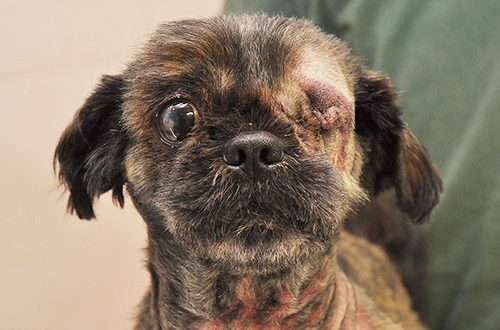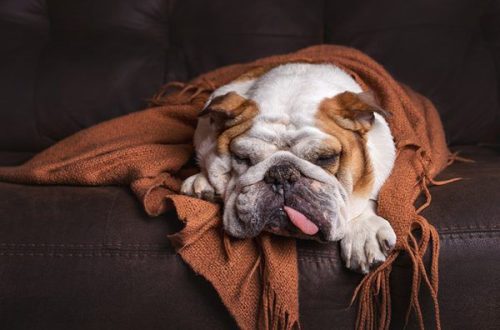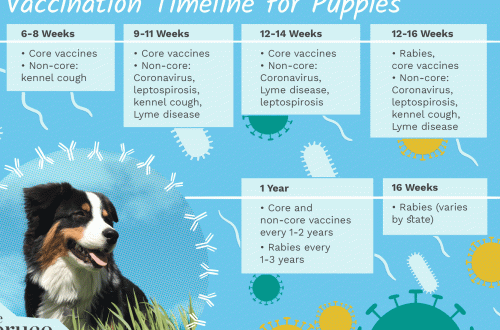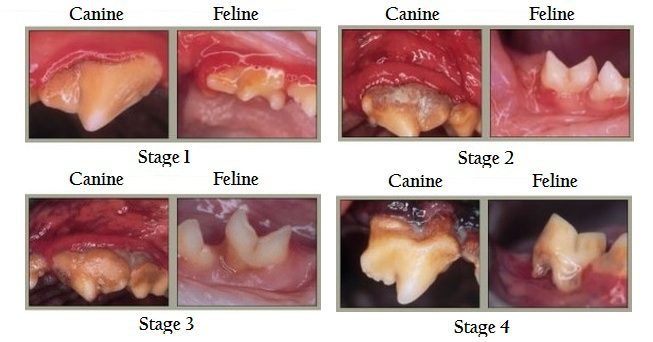
Oral diseases in dogs and cats
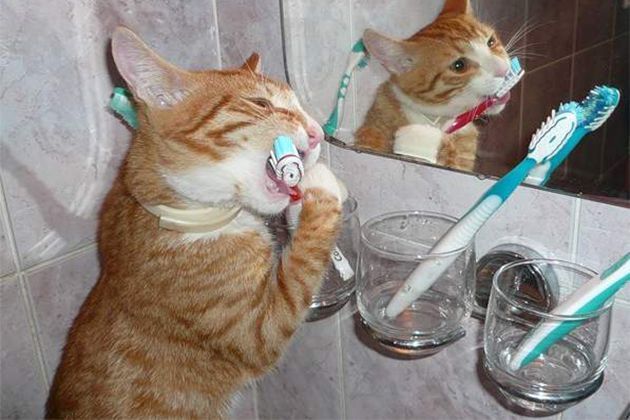
The most common diseases of the oral cavity and their prevention in dogs and cats.
Carnivorous mammals have two generations of teeth (deciduous and permanent). They belong to heterodonts – animals with several types of teeth that perform different functions. Unlike humans, carnivores hardly chew their food. They tear it to pieces and swallow it. Therefore, dogs and cats rarely develop cavities and are more likely to develop periodontal disease. These are diseases of the periorbital tissues.
Contents
- How can you tell if something is wrong with your pet’s mouth?
- Plaque and tartar
- Baby teeth
- Abnormal position of teeth, malocclusion
- Tooth fractures
- Foreign bodies in the oral cavity
- Of the diseases of the oral cavity, the most common are:
- Prevention of diseases of the oral cavity
- How to clean your teeth from plaque
How can you tell if something is wrong with your pet’s mouth?
- Bad smell from the mouth, drooling, tremor of the masticatory muscles, difficulty eating and playing with objects.
- Bleeding, swollen, red gums, ulcers, plaque and calculus on teeth, loose teeth, loss of teeth.
- Change in the shape of the muzzle: manifestation of swelling in the nasal or infraorbital region or in the region of the lower jaw; enlargement of the submandibular lymph nodes.
Plaque and tartar
Decreased chewing activity, malocclusion, delayed milk teeth, lack of oral hygiene, as well as various diseases such as diabetes, kidney and liver failure, and immunodeficiencies contribute to the deposition of plaque and the formation of stone. Already 2 weeks after the formation of plaque, tartar is formed as a result of calcification under the action of mineral salts, mainly calcium contained in saliva (supragingival calculus) or the fluid in which the gingival sulcus is immersed (subgingival calculus). The stone itself is not the cause of periodontal disease, but its rough surface provides an ideal environment for plaque and microorganisms to attach. Professional treatment – sanitation (removal of tartar by a veterinarian with ultrasound, removal of subgingival deposits and polishing of teeth) followed by daily brushing helps to reduce the initial loosening of the teeth and maintain this condition for several years.
Baby teeth
The change of milk teeth in dogs of large dimensions begins at about 3,5 – 4 months, and in miniature breeds, this fate befalls by about six months (and sometimes 7-8 months). The molars grow first, then the premolars, then the molars, and finally the canines. The total number of molars in dogs is 42 (20 at the top and 22 at the bottom). In kittens, the change of milk teeth to permanent teeth begins at about 4 months. By 3,5 – 5,5 months. incisors change, by 5,5 – 6,5 months. – fangs, by 4 – 5 months. – premolars, by 5 – 6 months. – molars. A complete change of teeth is completed by 7 months, it can stretch up to 9 months. An adult cat has 30 permanent teeth. In cats, most often the teeth change without any problems, there may be a smell from the mouth and reddening of the gums. In dogs, especially small breeds, milk teeth can linger into adulthood. It is necessary to monitor the process of changing teeth, teeth that do not fall out for too long must be removed, since extra teeth lead to malocclusion, damage to the gums, rapid formation of tartar, and periodontal disease.
Abnormal position of teeth, malocclusion
In the event that an abnormally located tooth injures the gum or lip with its tip, or interferes with the physiological closing of the jaws, it must be removed. In case of an incorrect bite, special mouthguards and braces for dogs can be used, but this can only be done by a specialist, braces are not installed in case of gum disease and the presence of tumors. If the dog is not pedigree, and the bite does not interfere with the normal functioning of the jaw, does not damage the gums, it can not be corrected, it will only be a cosmetic defect.
Tooth fractures
Injuries and excessive chewing of hard objects can break the teeth. In this case, depending on the lesion, the tooth is either removed or covered with a filling.
Foreign bodies in the oral cavity
Bones, threads, needles, wire, thorns from plants, wood chips, “rain” and tinsel often get stuck in the oral cavity. The animal opens its mouth, sticks out its tongue, rubs its muzzle with its paws or on the ground, floor and furniture. Salivation and increased respiratory rate, coughing, vomiting, refusal to feed may be observed. If the foreign object is not removed soon, it can cause inflammation.
Of the diseases of the oral cavity, the most common are:
Stomatitis
Inflammation of the oral mucosa. The most characteristic signs of stomatitis are painful eating, salivation, and an unpleasant smell from the mouth.
- Catarrhal stomatitis. With this form of the disease, there are no obvious wounds and ulcers. There are obvious signs of inflammation – redness, swelling, soreness, there may be a slight whitish coating in the intervals when the animal is not eating or drinking. When plaque is removed, bleeding areas of the mucosa are formed. It manifests itself as separately inflamed areas, and can cover the entire oral cavity, especially the gums. The beginning of all stomatitis.
- Ulcerative stomatitis – pimple bubbles form on the surface of the mucosa, which burst with the formation of small wounds, around which healthy tissues become very inflamed. Most often found on the surface of the gums, but also occur on the lips and cheeks. With ulcerative stomatitis, the dog often eats with some chomping. Ulcerative stomatitis can be a symptom of leptospirosis in dogs and calcivirosis, feline immunodeficiency virus, and herpesvirus infection in cats.
- Atrophic stomatitis. Outwardly, there is a very strong inflammation on the gums and mucous membrane of the inner surface of the cheeks. If you look closer, you can see the smallest bubbles and wounds / sores. The surface of the mucosa is tense and visually as if stretched from inflammatory edema, as if it is about to burst. The slightest touch to the lesion causes obvious severe pain in the dog. The pet categorically refuses solid food, and in special cases cannot even eat soft food. Injuries to the gums occur almost instantly with any contact with something hard.
- Phlegmonous stomatitis. It is always a sharply unpleasant smell from the mouth and the presence of pus in wounds, ulcers and its accumulation between the lips and gums. Due to the humid environment, the purulent process spreads throughout the oral cavity, affecting any slightest microtrauma and vesicles. It is treated only with the use of systemic antibiotic therapy.
- Papillomatous stomatitis. This form of stomatitis is caused by the papillomavirus and is characterized by the formation of specific neoplasms on the mucous membranes of the lips and cheeks, resembling cauliflower – papillomas. Self-medication is prohibited, because. there is a high risk of spread and growth of papillomas throughout the oral cavity. It is very common in puppies due to a weak immune system.
It is impossible to cure stomatitis in a dog on its own without visiting a veterinarian (at least without consequences). No owner will be able to determine exactly what caused this ailment. The main point in the treatment is to eliminate the cause of inflammation, i.e. without its exact definition, any medical procedures will be in vain.
Gingivitis
Inflammation of the gums, caused by the adverse effects of local and general factors and proceeding without violating the integrity of the gingival junction. With gingivitis, the gums become bright red, swollen. Eating is difficult. There may be salivation. The gums are bleeding.
Periodontitis
Inflammation of the periodontal tissues (tissues surrounding the tooth), characterized by progressive destruction (destruction) of the periodontium and the bone of the alveolar (tooth socket – a depression in the jaw in which the root of the tooth is located) process of the jaws. The symptoms are similar to those of gingivitis. When examining the oral cavity, pockets of the periodontal zone are found, the teeth are mobile, painful. It is also possible to lose teeth.
Periodontal disease
Dystrophic (pathological state of tissues, characterized by metabolic disorders and structural changes) periodontal lesion. The disease is characterized by a chronic course. As a rule, periodontal disease is a pathological syndrome of general somatic diseases. As the process develops, pallor of the gums, multiple exposure of the roots of the teeth, the appearance of diastema (an increase in the gap between the teeth), and a fan-shaped divergence of the teeth are observed. At later stages, pathological tooth mobility is added.
Tooth resorption (in cats) (FORL)
Dental disease in cats, in which the destruction of tooth tissues occurs with the formation of cavities, all tooth structures are destroyed. Outwardly, the disease can be imperceptible and can be detected only with an X-ray examination of the teeth. Sometimes the gum in the area of the affected tooth becomes red, may bleed and grow on the crown. Unfortunately, most often the teeth affected by this pathology must be removed, since there is currently no effective method for treating this disease.
Caries
It does not appear as often in dogs and cats, but it does occur nonetheless. Under the dental caries is called the defeat of the hard tissues of the tooth, often leading to the destruction of the structures of enamel, dentin. With significant destruction of the tooth tissue, accompanied by the formation of cavities, it is possible to destroy the crown part of the tooth. With deep carious lesions, the inflammatory process can pass to the pulp of the teeth, the roots of the teeth, with the possible involvement of periodontal tissues in the inflammation. Caries in animals, just like in humans, has many causes, and it is impossible to single out only one of them. Definitely a huge role is played by genetic predisposition, which is realized in problem teeth through immunity, resistance, hormonal system. Secondary role is the quality of food. So feeding carnivorous food rich in carbohydrates (cereals, dry food) and with a lack of food rich in calcium (especially for puppies and kittens), plaque can form and enamel defects can form due to mineral metabolism disorders. Treatment of a carious tooth depends on the degree of damage – it can be sealed or removed.
Tumors
The growth of gum tissue, often covering the teeth, may be complete and uniform in color, or covered with age spots, ulcers, areas of necrosis, teeth may stagger, fall out or move. The muzzle often takes on an asymmetrical shape. Neoplasms can also affect any soft tissues of the oral cavity – gums, palate, tongue, cheeks, pharynx, pass into the nasal cavity, and jaw bone tissue can also be destroyed. Tumors of the salivary glands begin with inflammation and are about twice as common in cats as they are in dogs. Oral tumors account for approximately 5–10% of all tumors in dogs and cats. In dogs, a significant proportion of neoplasms are benign, while in cats, the majority of neoplasms are malignant. They require a mandatory visit to the veterinarian as soon as they are noticed.
Prevention of diseases of the oral cavity
There are special chewing bones, sticks, pads that help clean the teeth with an abrasive effect, as well as toys for brushing teeth and massaging gums. Many well-known pet food companies add anti-plaque agents to the food for dogs and cats, such as polyphosphates, essential oils, and also use a special structure of dry food kibble (mechanical cleaning). This only works on plaque and a small amount of calculus. To prevent diseases of the oral cavity, it is necessary to regularly examine the oral cavity of your pet, clean the plaque 1-2 times a week with special pastes and a brush for animals, you can use liquids and sprays for the oral cavity. As necessary, you need to remove tartar with tools or an ultrasonic scaler, such professional cleaning is done only by a veterinarian.
How to clean your teeth from plaque
It is necessary to use special products for animals – human toothpastes are dangerous if swallowed. This procedure also requires special brushes for animals, a finger brush, a bandage wrapped around a finger, for small dogs and cats, you can use small children’s brushes with soft bristles that will not harm the pet’s health. Toothpastes and gels for dogs do not require rinsing, and often have a rather pleasant taste for the dog.
- A simple option is to wrap your finger with a bandage, preferably 3-4 layers. Next, apply a special paste or gel, and wipe your teeth with light movements. When brushing, do not apply force, do not press hard, for fear of scratching the enamel and damaging the gums.
- Apply the paste to the bristles of the brush, gently brush, starting with the back teeth.
- If the procedure is performed for the first time, it may not be possible to clean all the teeth at a single time. Perform the manipulation in a series of steps.
- No need to clean the inside of your pet’s teeth every time. The dog can clean it on its own.
- You will need to create a calm environment so that the animal perceives the procedure easily. Cleansing does not need to be associated with discomfort. In the process, it is recommended to talk affectionately with the animal, to praise.
If you find any problems with the oral cavity, it is very important not to self-medicate, but be sure to contact your veterinarian to take tests, make a correct diagnosis and correct treatment.



